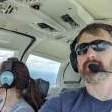What do you think of these motor mounts...
-
Members Online
- DContreras96
- 201er
- Parker_Woodruff
- David Cabot
- Souhail
- PWL
- StevenL757
- Meshach
- TCC
- ArtVandelay
- Marc_B
- DCarlton
- Gee Bee Aeroproducts
- Alan Fox
- MikeOH
- Hoeschen
- VetRepp
- Brian E.
- Cleared to land
- hazek
- PeytonM
- varlajo
- alextstone
- LANCECASPER
- Falcon Man
- GoDemonDeacons
- Sabremech
- Greg Ellis
- Phil EF
- Mufflerbearing


Recommended Posts
Join the conversation
You can post now and register later. If you have an account, sign in now to post with your account.